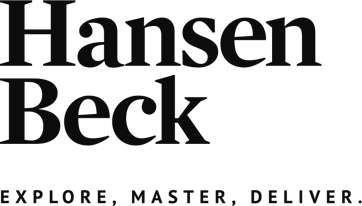What are the steps in a typical sales cycle?
Ask any sales professional, and you’re likely to get different answers … at least at the detailed level.
Some images I found online:
I noticed that some steps seem to be common to all or most depictions:
- First contact
- Discovery of needs/wants
- Preparation of an offering
- Negotiation
- Closing the sale
Let’s focus for a few moments on Step 5, Closing the Sale. Certainly, every depiction of the sales cycle that I’ve ever seen includes some form of closing the deal. And it’s no surprise! We haven’t done our job until we get a firm commitment from the customer.
What is our ideal scenario for Closing the Sale? What is the best that we can imagine? Should we aspire to be really good at Closing … to be the best Closer for miles around? Well, we certainly need to be able to close a deal when needed, but I’d like to suggest an alternate ideal:
Vision: The Customer Closes the Sale!
What if our Vision, our Utopia, became instead that the customer will self-close? What if we said, “I’d like the earlier steps of the Sales Cycle to be so compelling, so dynamic and so exciting that the customer CAN’T WAIT to get going! I’d like the customer to call me up and say, ‘Hey, let’s move forward with this!’”
Is this a realistic vision? Is it possible that, by giving our best, we can generate so much interest and eagerness in the customer’s heart and mind that they would call us, urging that we move forward together?
Not only is it a realistic vision, but it’s a fully realized one for many top sales professionals! Recently a few of us here at Hansen Beck were discussing closing the sale, and one of our colleagues admitted, “You know, I don’t really have to close my deals very often. The customer usually calls me up and asks me when I’m available to start the program.” This was a bold assertion! But then, after reflecting on it for just a moment, one-by-one, we replied, “Yeah, you know, you’re right.” We all acknowledged that sometimes the customer initiated and led that step of the process. The customer volunteered their formal commitment.
Yet, up until that moment, none of us held this as a vision. None of us was consciously working toward that outcome — that the customer would close us. It just happened sometimes. So we drilled down:
- When did it happen?
- What were the circumstances?
- When did things go so well that closing by us was unnecessary?
The answers were simple and came to mind immediately: it was when we were really in tune with the customer. It was when the sales process had been really fun! It was when we were in sync with the customer and saw the challenges from the same perspective. It was when we were able to generate so much mutual energy with the customer that no other alternative could compare.
Wow. Isn’t it great when that happens?? Isn’t that THE BEST? What if we consciously chose this as our ideal: to tune in to the customer so thoroughly that the utopia we envisioned together couldn’t be beaten? Could the resulting energy and momentum carry us all the way through closing? I believe this is a noble objective!
Visions determine our Behavior
If you participate in one of Hansen Beck’s Sales Effectiveness programs, often these are the first words you’ll write down. And we really believe it! Our behaviors do not fall from the sky; they cascade from the Visions that we form inwardly. So, if we establish as our Vision that the customer will self-close, what behaviors might cascade from such a scenario?
- Tune-in to them! Some of you might be old enough to remember tuning the radio with the circular, analog dial. You really had to be precise! If you didn’t dial in the station exactly, you didn’t receive a pure signal. It’s the same with our customers. Tune in to them! Be precise. Think about them in advance. Remember what makes them tick. During the meeting, ask good, open questions. Listen carefully and silently while they answer. Give them good eye contact. Then listen some more! Elongate the points they bring up. Learn the technical terminology they use. Be more useful. Give them a boost. Bring out the best in both of you!
- Mobilize their emotional energy! We all learn in both our schooling and our on-the-job training how to tap into mental energy. We’re well-versed in furnishing the correct data, the key specifications, and accurate contract terms. And yes, we must get these mental aspects right … absolutely! But even the mediocre performers amongst our competitors will get that stuff right, too. So that won’t differentiate us. Let’s take the extra steps to bring the emotional side into play. Let’s go into the call KNOWING why and how we’re enjoying ourselves! Let’s remember exactly why we like this customer so much! If our heart is filled with all this joy (for our lives) and admiration (for our customers), then they will see it in our eyes, feel it in our handshake, and hear it in our voice.
- Forget about selling. Yeah, that’s right. I said it. Forget about selling. Be fully present with the customer. Enjoy them! Learn about everything they’re facing. The business world is a fascinating place. Listen carefully and investigate the nuances that make their corner of the universe interesting. Ask about their visions, their joys, their successes, and their failures. You are more than “just” a salesperson, and they are more than “just” a customer. Become coworkers! Be present, be human, and, in the words of Bill and Ted, “Be excellent to each other!”
Sounds like a great way to make a living! Maybe this is why so many salespeople tell us they wouldn’t trade their jobs for any other role in the company.
If you are looking to close more deals, contact your local Hansen Beck representative. We offer programs in Sales Effectiveness and Negotiation in over 25 countries.



